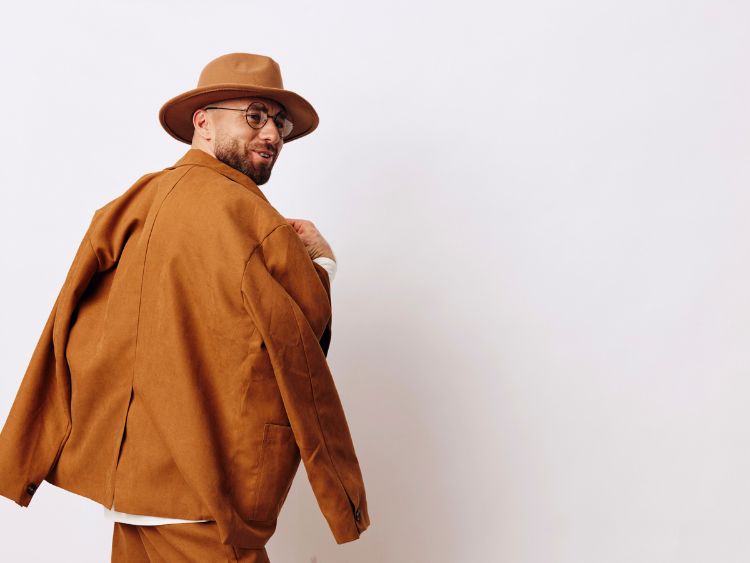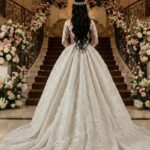The 1950s was a transformative decade in fashion. As the world recovered from the harsh realities of World War II, the fashion industry emerged with a renewed sense of optimism and creativity. This decade introduced timeless pieces that continue to influence today’s trends. Whether you’re a vintage enthusiast or curious about the origins of modern-day classics, 1950s fashion offers a treasure trove of style inspiration. Let’s jump in!
The Rise of Feminine Silhouettes
If there’s one thing that stands out about 1950s fashion, it’s the emphasis on the female figure. Designers of the time, like Christian Dior, championed the hourglass silhouette. With cinched waists, full skirts, and an overall feminine aesthetic, women’s clothing reflected a newfound confidence in post-war society.
Key Elements of 1950s Women’s Fashion:
- Cinched Waistlines: Dresses often had fitted bodices with wide belts or were nipped in at the waist.
- Full Skirts: Poodle skirts and circle skirts were popular choices, offering a playful yet elegant look.
- Pointed Bras: Underwear started shaping the body, with pointed bras (also known as bullet bras) becoming a staple.
- Gloves and Hats: No outfit was complete without a pair of gloves or a stylish hat. They were more than accessories—they were statements.
Why the Focus on Feminine Shapes? After the war, there was a collective desire for luxury and glamour, especially since many women had been working in factories. The 1950s marked a return to domesticity for many, and this return was reflected in their clothing, which celebrated femininity and elegance. Brands capitalized on this shift, with department stores showcasing ultra-feminine designs meant for the everyday woman.
1950s Fashion for Men: The Rise of the Rebel
While women were embracing their femininity, men were experimenting with both casual and refined looks. 1950s fashion for men ranged from the rebellious styles popularized by James Dean and Marlon Brando to the tailored elegance worn by men in corporate America.
Key Trends in Men’s 1950s Fashion:
- Leather Jackets: Thanks to Hollywood stars, leather jackets became synonymous with rebellion.
- Jeans: Jeans were no longer just workwear—they became a fashion statement for the younger generation.
- Suit and Tie: The “Mad Men” look, with slim-fitting suits and skinny ties, dominated corporate offices.
- Bowling Shirts: For casual wear, men often donned colorful bowling shirts with bold prints.
The rebellious look was a direct reaction to the conformity that was expected in the 1950s. Young men wanted to break free from societal expectations, and fashion gave them the opportunity to express their individuality.
Accessories: Completing the Look
No discussion of 1950s fashion would be complete without mentioning the accessories that brought outfits together. Women sported cat-eye sunglasses, pearls, and handbags that matched their shoes. Men were often seen wearing fedoras, and cufflinks were a must for formal occasions.
Popular Accessories in the 1950s:
- Cat-eye Glasses: Stylish and practical, these glasses framed the face and became a fashion must-have.
- Scarves: Silk scarves added a pop of color and were often worn tied around the neck or head.
- Handbags: Bags were structured and typically matched the shoes for a cohesive look.
Influence of Pop Culture on 1950s Fashion
Pop culture had an undeniable impact on 1950s fashion. The rise of rock ‘n’ roll music, television, and cinema heavily influenced how people dressed. Icons like Marilyn Monroe, Elvis Presley, and Audrey Hepburn didn’t just entertain—they set fashion trends that the world eagerly followed.
How Did Celebrities Shape 1950s Fashion?
- Marilyn Monroe: Known for her glamorous style, Marilyn made figure-hugging dresses and red lipstick iconic.
- Audrey Hepburn: Her portrayal of Holly Golightly in Breakfast at Tiffany’s made the little black dress (LBD) an essential wardrobe item.
- Elvis Presley: Elvis brought rock ‘n’ roll to the masses, and his slick hair and daring outfits influenced men’s casual fashion.
The Evolution of 1950s Fabrics and Prints
In the 1950s, the introduction of new fabrics like nylon and polyester made fashion more accessible to the masses. These synthetic materials were cheaper than traditional fabrics and allowed for more vibrant colors and prints to be produced.
Popular Prints and Materials of the 1950s:
- Polka Dots: Cheerful and playful, polka dots adorned dresses and blouses.
- Plaid: Men and women alike sported plaid patterns, especially in the colder months.
- Gingham: This checkered pattern was seen in skirts, dresses, and even aprons, symbolizing domestic bliss.
- Taffeta and Chiffon: Used for evening wear, these luxurious fabrics were perfect for formal events.
FAQs about 1950s Fashion
- What were the most popular clothing items in 1950s fashion? The 1950s saw the rise of poodle skirts, circle skirts, pencil dresses, leather jackets, and fitted suits. Accessories like gloves, hats, and scarves were also popular.
- How did 1950s fashion reflect societal changes? The post-war era brought a return to traditional gender roles, which was reflected in fashion. Women’s clothing emphasized femininity, while men’s fashion ranged from conservative suits to rebellious leather jackets.
- What were the popular fabrics in the 1950s? Nylon, polyester, taffeta, chiffon, and cotton were widely used in the 1950s. The development of synthetic materials allowed for more vibrant prints and patterns to emerge.
- Who were the key fashion icons of the 1950s? Marilyn Monroe, Audrey Hepburn, and Elvis Presley were some of the biggest influencers in 1950s fashion. Each of them had a distinct style that continues to inspire modern fashion.
- Why were accessories so important in 1950s fashion? Accessories were a way to complete an outfit and were often seen as status symbols. A woman’s handbag, gloves, or hat could speak volumes about her social class and personal taste.
Summary: The Lasting Legacy of 1950s Fashion
The fashion of the 1950s was all about contrast. It embraced both rebellion and conformity, luxury and practicality. The trends of this decade have left an indelible mark on the fashion world, with many 1950s-inspired styles still popular today. Whether it’s the timeless appeal of the hourglass silhouette, the rebellious charm of a leather jacket, or the structured elegance of a tailored suit, 1950s fashion continues to captivate.
Authoritative Links:
- www.vogue.com/article/1950s-fashion-history
- www.history.com/topics/1950s-fashion
- www.fashionhistory.edu/1950s





